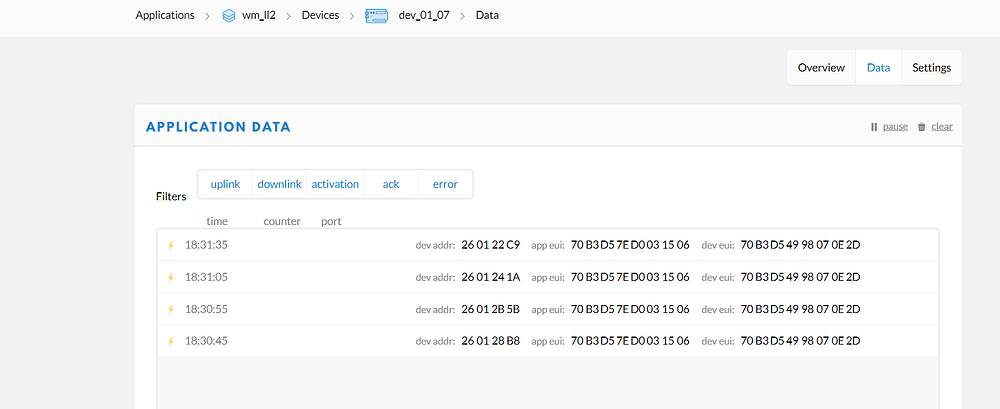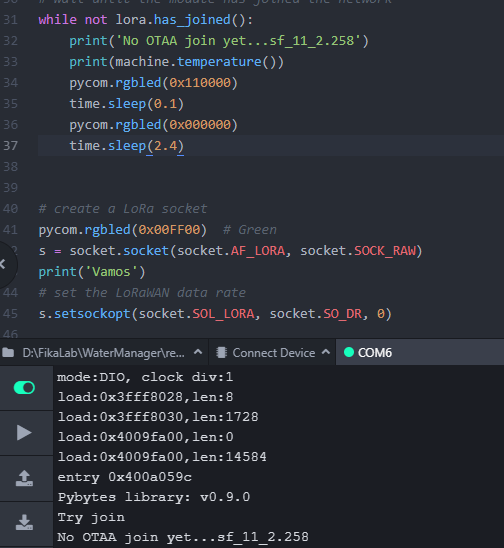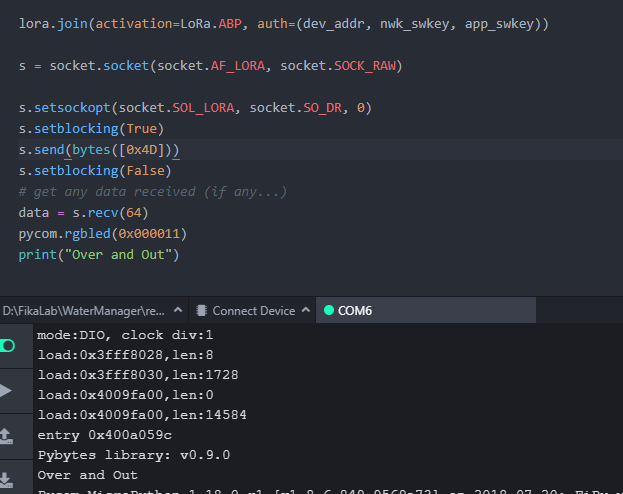Hello Nick,
My device EUI i got from
from network import LoRa
import ubinascii
lora = LoRa()
print("DevEUI: %s" % (ubinascii.hexlify(lora.mac()).decode('ascii')))
My message receveid, all like that
{
"time": "2020-07-01T16:07:48.463487418Z",
"frequency": 868.5,
"modulation": "LORA",
"data_rate": "SF7BW125",
"coding_rate": "4/5",
"gateways": [
{
"gtw_id": "eui-00023dfffe0f5945",
"timestamp": 3790330603,
"time": "2020-07-01T16:07:48.422961Z",
"channel": 2,
"rssi": -116,
"snr": -7
}
],
"latitude": 38.79921,
"longitude": -9.215544,
"altitude": 388,
"location_source": "registry"
}
I was about 100m on sunday from this gateway, not rssi problem.
Im in Portugal, city of Odivelas.
Yes, checked. One closer to me (890m sight-of-view) but funny i connect only to this one, 9.8km sight-of-view
And closer to one gateway on last sunday, in Lisbon, Portugal
{
"time": "2020-06-28T11:19:33.131886705Z",
"frequency": 868.5,
"modulation": "LORA",
"data_rate": "SF7BW125",
"coding_rate": "4/5",
"gateways": [
{
"gtw_id": "eui-00f142122877fc0d",
"timestamp": 3291423379,
"time": "2020-06-28T11:19:33.036896Z",
"channel": 2,
"rssi": -91,
"snr": 12
},
{
"gtw_id": "eui-00f142122877fc0d",
"timestamp": 3291423379,
"time": "2020-06-28T11:19:33.036896Z",
"antenna": 1,
"channel": 18,
"rssi": -87,
"snr": 15
}
],
"latitude": 38.756966,
"longitude": -9.115968,
"location_source": "registry"
}


